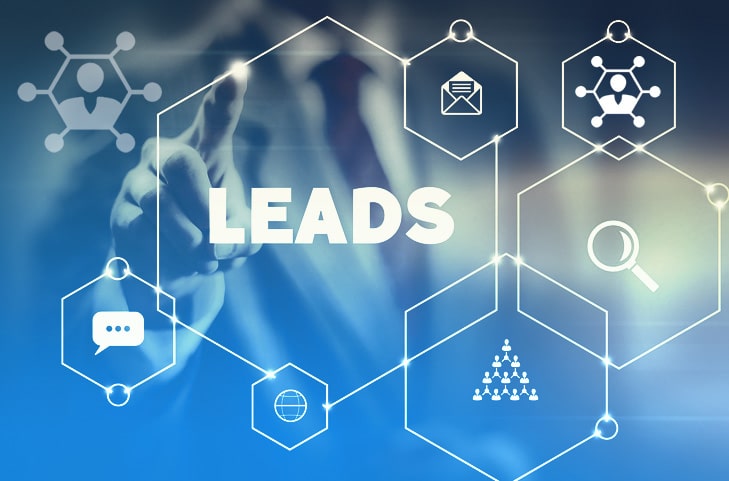Introduction
In today’s fast-paced digital landscape, businesses rely heavily on email marketing to reach potential clients and expand their customer base. For B2B companies, lead generation is the cornerstone of growth, and an effective email list can be a game-changer in scaling these efforts. With targeted email lists, businesses can enhance their marketing campaigns, build stronger relationships, and ultimately drive more conversions.
This article delves into the significance of email lists in B2B lead generation, explores best practices for maximizing their effectiveness, and highlights strategies to scale lead generation using email marketing.
Why Email Lists Are Essential for B2B Lead Generation
1. Direct and Personalized Communication
Email lists provide a direct channel for businesses to engage with potential clients. Unlike social media or paid ads, where messages can be easily overlooked, emails land directly in the recipient’s inbox, increasing the chances of engagement. Personalized emails tailored to specific industry pain points or business needs can improve response rates significantly.
2. Cost-Effective Lead Generation
Email marketing is one of the most cost-effective lead generation strategies. Compared to other digital marketing channels, email campaigns require minimal investment yet offer high returns. With a well-segmented email list, businesses can nurture leads without incurring substantial advertising costs.
3. Higher ROI and Conversion Rates
B2B email marketing boasts a high return on investment (ROI). According to various studies, email marketing generates an average ROI of $42 for every $1 spent. With an optimized email list, businesses can engage decision-makers and guide them through the sales funnel more effectively than traditional marketing methods.
4. Nurturing Long-Term Relationships
B2B sales cycles are typically longer than B2C, requiring continuous engagement with prospects. A strong email list allows businesses to nurture leads over time by providing valuable content, updates, and exclusive offers, ensuring that potential clients remain engaged until they are ready to convert.
Building a High-Quality B2B Email List
1. Identify Your Ideal Target Audience
Before building an email list, businesses need to define their target audience clearly. Understanding industry verticals, job roles, company sizes, and pain points will help create a more targeted and effective email marketing strategy.
2. Use Lead Magnets to Attract Subscribers
Offering valuable resources such as whitepapers, case studies, eBooks, or exclusive webinars can encourage prospects to provide their email addresses. Lead magnets serve as a powerful tool for capturing high-quality leads interested in a company’s offerings.
3. Leverage Website Forms and Landing Pages
Embedding sign-up forms on websites, blog posts, and landing pages can help businesses collect email addresses from interested visitors. Optimized forms with minimal fields and clear CTAs improve conversion rates.
4. Utilize LinkedIn and Other Social Platforms
LinkedIn is a goldmine for B2B lead generation. Businesses can use LinkedIn Ads, InMail campaigns, and organic networking to gather relevant contacts and grow their email lists.
5. Purchase or Rent Verified B2B Email Lists
For companies looking to accelerate their lead generation efforts, purchasing or renting a verified B2B email list can be an effective solution. However, it is crucial to work with reputable providers to ensure compliance with data privacy regulations like GDPR and CAN-SPAM.
Best Practices for Scaling B2B Lead Generation with Email Lists
1. Segment Your Email List for Targeted Outreach
Not all leads are the same. Segmenting email lists based on industry, company size, job role, and engagement level enables businesses to send highly relevant content to each group. Segmented campaigns have higher open and click-through rates compared to generic email blasts.
2. Personalize Email Content
Personalization goes beyond addressing recipients by name. Tailoring content to their specific pain points, challenges, or past interactions enhances engagement. Using AI-driven tools to automate personalization at scale can significantly boost lead generation efforts.
3. Automate Drip Campaigns
Drip campaigns nurture leads through automated sequences of emails sent at predefined intervals. These campaigns educate potential clients, address objections, and gradually push them toward conversion. Effective drip sequences include:
- Welcome emails introducing the brand
- Educational content addressing industry pain points
- Case studies and success stories
- Personalized offers or demos
4. Optimize Email Deliverability and Open Rates
A well-maintained email list ensures high deliverability and engagement. Best practices include:
- Removing inactive or unresponsive contacts regularly
- Using double opt-in to verify subscribers
- Crafting compelling subject lines to increase open rates
- Testing different sending times for optimal engagement
5. Leverage A/B Testing to Improve Performance
A/B testing helps businesses determine which subject lines, email content, CTAs, and design elements drive better results. Continuous testing and optimization ensure improved lead conversion rates.
6. Incorporate Interactive Content and Videos
Adding interactive elements such as polls, quizzes, and videos in emails can significantly boost engagement rates. Video content, in particular, is highly effective in explaining complex B2B solutions in an engaging manner.
7. Track and Analyze Campaign Performance
To scale B2B lead generation, businesses must analyze key performance metrics such as:
- Open rates
- Click-through rates
- Conversion rates
- Bounce rates
- Unsubscribe rates
Using these insights, marketers can refine their strategies, improve engagement, and increase conversion rates over time.
Challenges and How to Overcome Them
1. Email List Decay
Over time, email lists naturally decay as contacts change jobs or companies. Regularly updating and cleaning email lists ensures better deliverability and engagement.
2. Avoiding Spam Filters
To prevent emails from landing in spam folders, businesses should:
- Avoid using spam trigger words in subject lines
- Authenticate emails using SPF, DKIM, and DMARC
- Encourage recipients to whitelist their email address
3. Maintaining Compliance with Data Privacy Laws
With strict data regulations such as GDPR and CCPA, businesses must ensure their email marketing practices comply with legal standards. Using permission-based marketing and obtaining explicit consent helps avoid legal issues.
Conclusion
Email lists play a crucial role in scaling B2B lead generation efforts by providing a cost-effective, targeted, and high-converting communication channel. By focusing on quality list-building, segmentation, personalization, and automation, businesses can maximize the impact of their email marketing campaigns.
As B2B lead generation continues to evolve, companies that leverage well-optimized email lists will gain a competitive advantage in reaching decision-makers, nurturing leads, and driving business growth.

